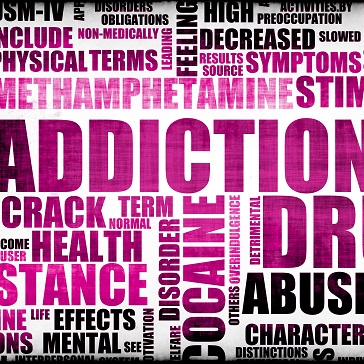Anxiety is a normal emotion that most of us have felt at one time or another. We may worry about a health problem or be concerned about meeting a work deadline. For some, though, anxiety becomes so intense that it interferes with daily life. The tension, strain, and stress can be serious enough that they try to find relief through a potentially dangerous practice: self-medication with alcohol or drugs.
What Is “Self-Medication”?
Self-medication involves using a substance to cope with negative feelings or physical discomfort without the guidance or oversight of a trained medical professional. Individuals struggling with anxiety may start abusing alcohol or drugs in order to calm themselves down and feel more relaxed. For example, they may get into the habit of drinking one or two beers before bed so they don’t lay awake at night feeling overwhelmed by life. They may smoke pot during a lunch break because they believe it will help them cope with a stressful workplace.
Specific Disorders And Substance Abuse
While any anxiety symptoms have the potential to contribute to substance abuse, a review of research suggests that those with generalized anxiety disorder (GAD) and panic disorder (PD) are most likely to struggle with substance abuse. Posttraumatic stress disorder (PTSD) and obsessive-compulsive disorder (OCD) – which also include significant anxiety although no longer categorized as anxiety disorders per se – have been closely linked to alcohol abuse [1].
Substances Used In Self-Medication
Someone experiencing anxiety can self-medicate with any substance. Some of the most commonly used substances include:
Alcohol
Alcohol is a popular substance of abuse among anxiety sufferers. Although it’s actually a depressant, drinking alcohol can initially numb feelings of stress, tension, nervousness, and fear. Alcohol also has a disinhibiting effect. This means that it helps people feel less inhibited or restrained; making them more likely to do things they would never do normally. This effect can make individuals feel freer and less afraid of the situation causing their anxiety.
For example, a disinhibited person may not be paralyzed by fear when he’s required to attend an office function or feel embarrassed or uncomfortable eating in public. Consuming alcohol makes many individuals feel friendlier and less anxious. In fact, studies show that some people with social anxiety are more motivated to drink specifically to reduce their social fears [2]. However, despite its initial calming effects, alcohol can end up prolonging or worsening feelings of tension [3].
Marijuana
Marijuana is also quite popular with anxiety sufferers. This is primarily due to its ability to help them feel more “laid back” and relaxed. According to one survey, nearly 90% of marijuana users reported they’d used the drug in order to relax [4]. When smoked, marijuana affects brain receptors linked to pleasure, producing a feeling of overall calmness.
Marijuana, like alcohol, may not be the effective anxiety reliever that many perceive it to be. For example, some users report having panic attacks after smoking it. Researchers believe this side effect is due to THC – the active ingredient in marijuana. THC has a negative impact on brain chemicals like serotonin and noradrenalin. Furthermore, some experts believe marijuana’s ability to impair thinking can contribute to increased anxiety in some users [5].
Heroin
Statistics don’t reveal the exact number of people who abuse heroin to reduce anxiety. However, the dangerous drug’s power to produce a relaxed state of mind may make it the drug of choice for some anxiety sufferers. When heroin is injected, the brain converts it to morphine. This causes a euphoric rush of warmth followed by drowsiness. Heroin is also said to blunt emotions, which may seem to take the edge off of stress, tension, and feelings of anxiousness. The feeling of relaxation is temporary, though, and users need to get high again in order to find relief. This cycle can lead to a serious addiction to the drug.
Cocaine
It seems counterintuitive that anyone struggling with anxiety would choose to use a highly stimulating drug like cocaine. Experts theorize that the drug activates the brain in a way that allows someone struggling with social anxiety to break through inhibitions and cope with stressful situations [6]. Like heroin, cocaine offers only fleeting anxiety relief, causing the user to continually seek out a high. Addiction, overdose, and death are all potential risks.
The Drug Use/Anxiety Paradox
When a person lives with anxiety, it can seem as though substances do reduce the troubling symptoms – and they may in the short term. However, substance abuse, even in the form of self-medication, leads to long-term problems that generate additional stress. Some users get so high that they end up being late for work. They may be unable to attend to the needs of their children or aging parents because their too drunk or have passed out. Substance abuse also harms their physical well-being. Each substance takes its own toll on health, from the potential liver damage of alcohol abuse to the dangers of overdose with cocaine or heroin use.
In addition, finding, buying, and using illicit drugs can contribute to anxiety. Users may worry that family members will notice the scent of marijuana on their clothing or feel uneasy about buying street drugs from an acquaintance. Drug-related activities inevitably add to the stress and strain they’re so desperately trying to alleviate.
Healthier Treatments For Anxiety
Anxiety symptoms affect every aspect of your life, so it’s essential to find help. Self-medication is never an effective or healthy treatment for anxiety. A combination of therapy and lifestyle changes is often enough to reduce symptoms of anxiety without the dangers of alcohol or drug abuse.
A skilled therapist can tailor treatment to address your specific type of anxiety. For example, if you struggle with social phobia, you may receive exposure therapy. Exposure therapy, as the name suggests, exposes you to anxiety-provoking situations in a gradual way that allows you to become more comfortable with them. The goal is to become desensitized to the anxiety as the exposure increases and intensifies.
People with anxiety also frequently benefit from learning relaxation techniques. Strategies like deep breathing exercises can reduce anxiety on the spot by lowering your body’s physical response to stress. Regular exercise is also an effective way to lessen anxiety because it naturally increases the brain’s levels of endorphins, which help promote a sense of wellbeing.
If you’re already self-medicating, be honest with your therapist and other treatment providers about your substance abuse. This will give them the opportunity to accurately assess you and determine the best treatment approach for both issues. You may be a good candidate for “dual diagnosis” treatment, which simultaneously addresses and treats your anxiety and your substance abuse problem. Leaving the substance abuse untreated will likely undermine your anxiety therapy, and vice versa.
Don’t risk your health by self-medicating with alcohol or drugs. Reach out for help so you can find a better way to cope with anxiety and live the life you deserve.
Read More About How Anxiety And Mood Disorders Are Linked To Opioid Abuse
References:
[1] http://www.ncbi.nlm.nih.gov/pmc/articles/PMC2904966/#!po=56.2500
[2] http://www.ncbi.nlm.nih.gov/pubmed/23915169
[3] http://www.sciencedaily.com/releases/2011/07/110715163216.htm
[4] http://www.parl.gc.ca/Content/SEN/Committee/371/ille/presentation/hathaway-e.htm
[5] http://www.uniad.org.br/desenvolvimento/images/stories/arquivos/Cannabis_and_anxiety.pdf
[6] http://primarypsychiatry.com/the-self-medication-hypothesis-revisited-the-dually-diagnosed-patient/
A new report shows a rise in U.K. hospital emergency room visits by adults in their forties for drug or alcohol issues. The country’s health providers are determined to continue tackling the issue of drug and alcohol abuse as they strive to lower the rate of substance abuse.
The report came from data firm Dr Foster Intelligence. The group used ER admissions records as the basis for who is most often abusing drugs and alcohol and how often that abuse reaches the level of required hospitalization. According to their 2013 Hospital Guide:
Hospitalizations For Drug And Alcohol Abuse
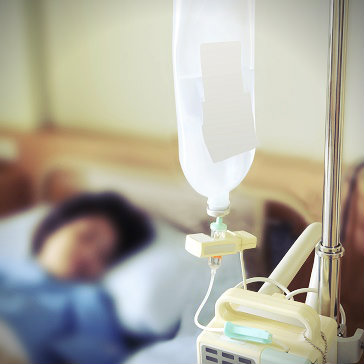 19 percent of ER admissions of 40-44 year olds were directly related to alcohol or drug use. That figure was highest among all age groups.
19 percent of ER admissions of 40-44 year olds were directly related to alcohol or drug use. That figure was highest among all age groups.- 18 percent of 45-49 year old admissions were for the same alcohol or drug reasons.
- In 2002-2003 the average age for a binge-drinking related hospitalization was 16 years. By 2004-2005 the typical age was 19. In 2012-13 the average age of those entering the hospital for binge drinking was 32 years.
- Despite the rise in average age for binge drinking ER visits, adolescents and young adults remain the most apt to need hospital care for binging.
Based on the Dr Foster report, young people are revealing more wisdom than their parents. Part of the problem is that an alarming number of patients don’t seem to be finding their way to recovery:
- The typical age of a person needing hospitalization for drugs or alcohol reasons in 2002-2003 was 41 years. In 2012-2013 the typical age was 43.
- Dr Foster found that over 500,000 individuals needed hospitalization for their alcohol or drug abuse at least one time during the past three years.
- At least 120,000 of those admitted to the hospital were 40-something years old. That is double the number of folks in their 20s or 60s who needed hospital care for drugs or alcohol.
Repeat ER Visits For Drugs Or Alcohol
Looking at all hospital admittances for alcohol or drugs in 2012-2013 a surprising 36 percent had already been admitted more than one time for the same problem in the past. And five percent had been in the hospital for drug or alcohol issues five times or more.
The problem appears to be most acute among the poor in Britain, with 36 percent of ER visits coming from the poorest regions of the country, and only nine percent of them coming from wealthy sections of the population.
A Dr Foster spokesman said that their figures were likely on the low end of actual numbers. The group only used hospital admittances where alcohol or drugs were 100 percent responsible. Left out were the high number of other admissions where substances played a key role.
Turning The Substance Abuse Hospital Visit Problem Around
Healthcare workers and National Health Services spokespeople say that there are ways to turn the problem around. For example, in 22 percent of the hospitalizations no general practitioner was listed on the health form. This could indicate that people are attempting to hide their problem from their primary care doctor rather than use them as a resource. If primary care doctors would use the NHS Healthcheck guide as a screening tool for substance abuse, more cases might be able to be treated before they reached a critical stage.
Hospitals also intend to implement more direct interventions by health professionals. Placing nurses who function as alcohol liaisons in the ER is one way to accomplish that goal.
Read More About Increased ER Visits For Surprising Drugs
Heavy drinking is a term used to describe a level of excessive alcohol consumption that steeply increases a person’s chances of developing alcohol use disorder (a condition which includes both alcohol dependence and non-dependent alcohol abuse). Fully 25 percent of all people who drink excessively meet the requirements for diagnosis of this condition. Heavy drinking can also increase the risks for other serious health problems. In a study published in 2013 in the journal Alcohol and Alcoholism, a team of Japanese researchers looked at the impact of heavy alcohol consumption on the risks for developing heart disease or diabetes.
What’s Considered Heavy Drinking?
According to guidelines issued by the National Institute on Alcohol Abuse and Alcoholism (NIAAA), the vast majority of people keep their risks for developing alcohol use disorder to a minimum when they limit both their daily and weekly alcohol consumption. As a rule, men minimize their risks when they consume no more than four drinks on a single day and 14 drinks in a single week. Women minimize their risks when they consume no more than three drinks on a single day and seven drinks in a single week. The NIAAA defines heavy drinking as any pattern of alcohol consumption that exceeds either the daily or weekly recommended amounts for men or women.
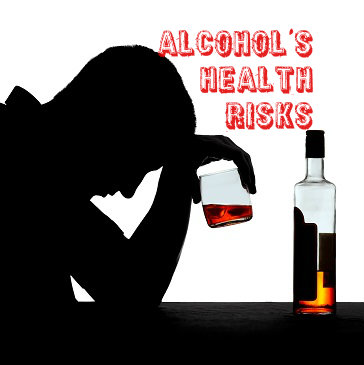 Heavy Drinking And Alcohol Use Disorder
Heavy Drinking And Alcohol Use Disorder
Twenty percent of all adults who drink heavily once a month develop alcohol dependence (alcoholism) or clinically diagnosable alcohol abuse. Thirty-three percent of all adults who drink heavily once a week develop one of these problems, while fully 50 percent of all adults who drink heavily twice a week become alcohol abusers or alcoholics. The definition for alcohol use disorder comes from the American Psychiatric Association (APA). The APA once considered alcohol dependence and alcohol abuse to be separate concerns. However, in recognition of the highly linked nature of the two conditions, the organization officially acknowledged them as aspects of a single disorder in 2013.
Heart Disease And Diabetes
Heart disease and diabetes are both relatively common, potentially fatal chronic health problems. Common forms of heart disease (also known as cardiovascular disease) include coronary artery disease, stroke and heart attack. Some people affected by the blood sugar disorder diabetes have an often-inherited condition called type 1 diabetes; however, most affected individuals have an acquired condition called type 2 diabetes. Among other factors, risks for both heart disease and type 2 diabetes are associated with a buildup of fat in the abdominal region and an increase in a type of blood-borne fat called triglyceride.
Risks Produced By Heavy Drinking
In the study published in Alcohol and Alcoholism, researchers from Japan’s Hyogo College of Medicine used an examination of 21,378 men between the ages of 35 and 60 to compare the levels of abdominal fat and triglyceride accumulation associated with abstinence from alcohol consumption, light alcohol consumption, heavy alcohol consumption and very heavy alcohol consumption. They performed this comparison in order to estimate some of the diabetes- and heart disease-related risks associated with drinking. The researchers defined light drinking as intake of less than 0.78 ounces of pure alcohol a day. They defined heavy drinking as intake of anywhere from 0.78 to 1.55 ounces of pure alcohol a day. They defined very heavy drinking as any level of intake above 1.55 ounces of pure alcohol a day. In the U.S., a single standard drink of alcohol contains 0.6 ounces of pure alcohol.
The researchers found that, compared to both non-drinkers and other drinkers, very heavy consumers of alcohol have significantly increased risks for developing the abdominal fat and triglyceride increases that can contribute to the onset of heart disease or type 2 diabetes. They also found that, compared to both non-drinkers and other drinkers, light drinkers have significantly lowered risks for this body fat and triglyceride accumulation. In addition, the researchers concluded that, compared to very heavy drinkers who exercise regularly and don’t smoke, very heavy drinkers who smoke and fail to get regular exercise have substantially higher chances of accumulating abdominal fat and triglyceride. Conversely, light drinkers who don’t smoke tend to accumulate abdominal fat and triglyceride considerably slower than light drinkers who do smoke.
The authors of the study published in Alcohol and Alcoholism also concluded that all four groups of participants (non-drinkers, light drinkers, heavy drinkers and very heavy drinkers) had substantially higher chances of developing high blood sugar levels (characteristic of diabetes) when they had increased levels of abdominal fat. This finding indicates that an accumulation of abdominal fat boosts the risks for type 2 diabetes even when an individual keeps his or her alcohol consumption within recommended daily and weekly amounts.
See How Alcohol Use Among Teens Has Changed Over Time And Learn The Risky Alcohol Behaviors
Alcohol consumption is illegal for all teenagers in the U.S. Despite this fact, significant numbers of teenagers drink, and therefore expose themselves to a range of health risks and social problems of alcohol. In a study published in October 2013 in the Journal of Child & Adolescent Substance Abuse, researchers from the Pacific Institute for Research and Evaluation looked at the way young, alcohol-consuming teenagers alter their drinking patterns as they grow older. These researchers found that most young teens manage to avoid any increases in alcohol consumption over time, while a small but significant minority of young teens experience either moderate or heavy increases in their consumption levels.
Alcohol Consumption Rates In Young Teens
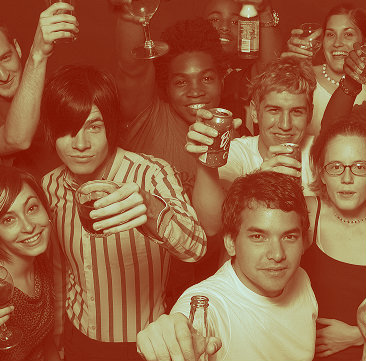 In collaboration with the University of Michigan, the National Institute on Drug Abuse tracks American teenagers’ level of involvement in substance use with an annual survey project called Monitoring the Future. According to results compiled from the 2012 version of this project, roughly 16 percent of all U.S. eighth graders consume alcohol at least once monthly. This rate follows a downward trend that first began in the mid-1990s.
In collaboration with the University of Michigan, the National Institute on Drug Abuse tracks American teenagers’ level of involvement in substance use with an annual survey project called Monitoring the Future. According to results compiled from the 2012 version of this project, roughly 16 percent of all U.S. eighth graders consume alcohol at least once monthly. This rate follows a downward trend that first began in the mid-1990s.
Figures gathered from Monitoring the Future also indicate that roughly 6 to 7 percent of all eighth graders in the U.S. participate in a dangerous form of consumption called binge drinking in any given two-week period. Binge drinking gets its name because participants binge on enough alcohol (typically, five drinks or more for boys and four drinks or more for girls) to become legally drunk in two hours or less.
Risky Behaviors Associated With Early Alcohol Consumption
Alcohol consumption has a strongly negative impact on teenagers, especially young teenagers below the age of 14, the National Institute on Alcohol Abuse and Alcoholism reports. Examples of the risks associated with drinking at this early age include higher rates of involvement in car crashes and other accidents, higher risks for homicide and suicide, higher rates for victimization in violent criminal acts such as assaults and rapes, increased chances of participation in disruptive conduct while in school, increased chances for poor academic results, an earlier onset of participation in sexual activity and increased risks for the practice of unsafe sex.
In addition, teen boys and girls who drink before the age of 14 tend to participate in binge drinking rather than moderate alcohol consumption. Critically, they also become alcoholics fully four times more frequently than people who don’t drink until they reach legal age.
Changes In Consumption Over Time
In the study published in the Journal of Child & Adolescent Substance Abuse, the Pacific Institute researchers looked at the ways in which young teenagers change their alcohol intake patterns as they grow up. The researchers also looked at the factors that help predict an increase in alcohol consumption among young teens. They undertook their project because only a few prior research groups had examined drinking patterns in this particular age group. All told, the study included 5,903 middle school teens. The researchers began tracking these teens when they were sixth graders and continued to track them through the eighth grade.
After completing the study’s primary phase, the researchers found that there are four emerging patterns of alcohol intake in middle school teenagers. Slightly less than 50 percent of all teens in this age group avoid drinking altogether or only drink on fairly rare occasion. Slightly more than 29 percent of all middle school teens initiate experimental alcohol use and continue to drink, but only increase their consumption levels to a minor extent over time. Fifteen percent of all middle schoolers start drinking significantly earlier than their alcohol-using peers, but still manage to keep their intake levels low. Slightly more than 6 percent of all children in this age group initiate alcohol use, and then fairly quickly begin consuming enough alcohol to rank as “heavy” drinkers.
Underlying Factors Of Teen Alcohol Use
The researchers concluded that the single biggest factor in forming any given young teen’s alcohol use pattern is his or her level of belief in the ability to control his or her rate of alcohol consumption. Young teens who believe they can control their drinking-related behaviors tend to do so, while those who don’t believe they can control their drinking tend to experience a spike in intake. Other factors identified as contributors to a young teenager’s alcohol intake pattern include the relative level of peer pressure he or she experiences for or against drinking, as well as the relative level of positive or negative feelings he or she has toward the effects and benefits of drinking.
Learn More About Detoxing From Alcohol And Gain Your Life Back!
13 Nov 2013
Why Is Drug Use Surging In Baby Boomers?
Statistics gathered by the Substance Abuse and Mental Health Services Administration, or SAMHSA, show a disturbing trend among older Americans. Members of the Baby Boom generation are using drugs and getting addicted to them in record numbers. Whether we can explain the trend or not, the fact remains that elder drug abuse presents some unique problems that require unique approaches for prevention and treatment.
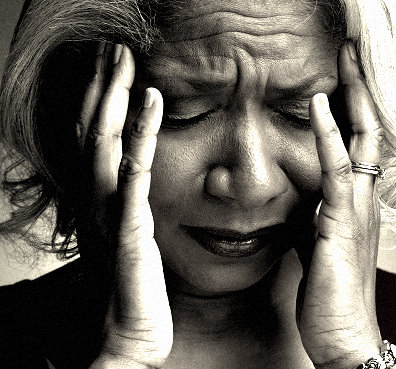 The statistics from SAMHSA show that among older Americans in recent years, marijuana use has increased five-fold, cocaine use has quadrupled, heroin abuse has doubled, and abuse of prescription drugs has more than quadrupled. The survey from SAMHSA also records treatment for drug abuse and addiction and found increases in the numbers of Boomers getting help for alcohol abuse in combination with cocaine use, and for abusing prescription painkillers. Emergency room visits for painkiller abuse and overdoses increased greatly over the last decade.
The statistics from SAMHSA show that among older Americans in recent years, marijuana use has increased five-fold, cocaine use has quadrupled, heroin abuse has doubled, and abuse of prescription drugs has more than quadrupled. The survey from SAMHSA also records treatment for drug abuse and addiction and found increases in the numbers of Boomers getting help for alcohol abuse in combination with cocaine use, and for abusing prescription painkillers. Emergency room visits for painkiller abuse and overdoses increased greatly over the last decade.
Explanations And Complications Of Drug Abuse In Older Americans
At first glance, the statistics surrounding the use and abuse of drugs in older Americans seems surprising. However, it is important to understand that we are discussing a generation of people who came of age in the 1960s, a time of experimentation and rebellion against authority. In tracking the drug and alcohol behaviors of this generation over the years, finding that they now, in their older years, are still using drugs is not a surprise. It only seems shocking when compared with the generations that came before them.
Unfortunately, drug abuse is even more of a problem for a person in his 50s and 60s than it was when he was in his 20s. As we age, our metabolism slows. For an older person abusing drugs or drinking too much alcohol, the time it takes to metabolize and get out of his system is much longer. An older person using may be intoxicated for longer and, therefore, at risk for more accidents and injuries.
Another issue is that drug users in their 50s or 60s are more likely to have health problems than they did in their younger years. Drug or alcohol abuse may exacerbate these problems, or even interact badly with prescribed medications. Furthermore, the symptoms of these other health conditions may mask the usual signs of drug abuse or addiction.
Signs Of Drug Abuse
Drug abuse and addiction are serious problems at any age, but in older Americans they present greater risks and complications. It is important to be aware of the possibility of drug use and to look out for signs in loved ones. Because another health problem may cause symptoms that mask the physical signs of drug abuse, watch for changes in behavior as the sign of a problem. Mood swings that are unexplained could be a sign of addiction, drinking or drug abuse. Changes in personality are also troubling. When someone just doesn’t seem like himself anymore, there could be a problem with drug abuse.
Prescription abuse is a growing problem among all age groups, so look for signs that your older friend or family member is abusing them. This could mean that he is requesting more refills for painkillers, seeing several doctors to get more prescriptions, going to more than one pharmacy or in other ways is trying to get more of his medications than has been prescribed.
Getting Help For A Loved One Abusing Drugs Or Alcohol
If anyone you love or care about is abusing drugs or alcohol, it is important to help him seek treatment; with an older person, it is especially imperative. Drug abuse can cause even more problems for someone who is older and should be stopped in its tracks. Having the courage to confront your parent, spouse, or other loved one about your suspicions could just save his life.
Confrontation is never easy so be prepared. Bring one or two other people along, friends or family members your loved one trusts. Be ready with solutions so that you are not simply accusing, but helping. Do your research ahead of time and find facilities for treatment that are prepared to work with older patients. As the problem of drug abuse continues to rise in the older demographic, more treatment centers are focusing on the age group. You should be able to find treatment plans that will suit the specific needs of your loved one and that will help him feel comfortable while getting well.
A recent study estimates that close to 10% of pregnant women drink alcohol. Given the potential harm that can come to a fetus when exposed to alcohol during development, and the fact that vast majority of females at child bearing age were probably taught this at some point in their lives, this number is truly upsetting. Unfortunately, it’s also not shocking.
Some people still think that alcoholism (or other forms of addiction) is a moral failing rather than a bona fide medical disorder. Sometimes the impulse to drink can be so great that an alcoholic will put the importance of a drink over the safety and well-being of loved ones. It happens all the time with parents of young children, even when there is overwhelming evidence that the parent is a good person and truly loves their kids. Who doesn’t know someone who grew up in an alcoholic household? Is there any reason to think that the simple fact of pregnancy would be able to reign in such a terrible disease?
Condemning Addicted Pregnant Women vs. Helping Them Abstain From Alcohol
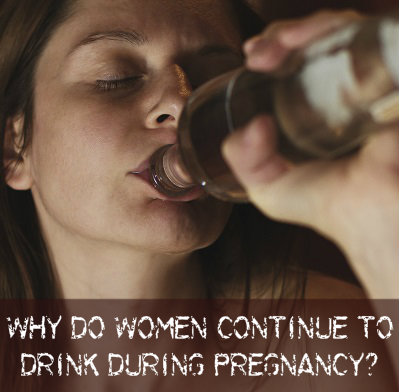 Instead of chastising and condemning pregnant women who drink, we should be devising ways to help them abstain from alcohol during gestation. For hard core alcoholics, it is entirely possible that the only way to stop them from drinking for close to a year would be to physically restrain them. Barring that, however, there are things that we can do to try to reduce the incidence of drinking while pregnant.
Instead of chastising and condemning pregnant women who drink, we should be devising ways to help them abstain from alcohol during gestation. For hard core alcoholics, it is entirely possible that the only way to stop them from drinking for close to a year would be to physically restrain them. Barring that, however, there are things that we can do to try to reduce the incidence of drinking while pregnant.
We, as a society, must be more proactive in teaching people about the risk of fetal alcohol syndrome, a complication that can happen if a mother drinks while pregnant. People born with fetal alcohol syndrome will likely have abnormal faces, growth issues, and problems in the central nervous system. These issues will not improve over time and the neurological impairments can lead to learning disabilities and behavioral issues, like attention deficit disorder. Fetal alcohol syndrome affects up to 3 million people in the US alone.
The problem with teaching about the dangers of fetal alcohol syndrome is that evidence is murky when it comes to determining how much alcohol can safely be consumed before a fetus is put at risk. It used to be, at least prior to the 1980‘s, that doctors never restricted women from drinking alcohol during pregnancy. However, at some point the medical establishment changed its tune and soon no amount of alcohol was permitted during pregnancy. Now, conflicting information can be found everywhere.
How Exactly Does Fetal Alcohol Syndrome Happen?
Babies do not inherit fetal alcohol syndrome. Instead, the ingested alcohol actually damages developing neurons and destroys brain cells. The damage can occur at any point in fetal development, even before the mother knows that she is pregnant. Once the cells have been compromised, there is presently no way to undo the damage.
Educate Teens On Abstaining From Alcohol If Having Sex
Without knowing exactly how much alcohol is safe for fetuses, the only safe option for pregnant women is to avoid drinking altogether. Since drug-related birth defects affect not only the child but society in general, more resources need to be expended to help keep pregnant alcoholics sober during gestation and continually remind women of all ages about the dangers of exposing themselves to toxic substances if there is a chance they could become pregnant. Since alcohol and sex many times go hand in hand, it is a responsible and appropriate discussion to have with kids, especially given how prevalent substance abuse is in some sub-teen populations.
Addiction During Pregnancy – All Of Our Concern
In addition to increasing the amount of materials available to women of child-bearing age regarding the dangers of drinking, medical professionals in all venues need to be more vigilant in identifying mothers who are actively drinking or are at risk of developing a drinking problem during pregnancy. Although alcohol rehab programs have begun offering specialized treatment programs for addicted mothers, the number of available beds is woefully inadequate to handle the sheer number of people requiring treatment. Hopefully governments will begin to see addiction during pregnancy as a public health crises and funnel adequate resources into handling the disease. If someone you know is drinking during pregnancy, encourage them to seek help.
When you look at the numbers, it can be discouraging to see how many teenagers continue to experiment with drugs and alcohol as this often leads to addiction. What most teens have difficulty comprehending is how this behavior could affect them for the rest of their lives.
Types Of Drugs Teens Experiment With
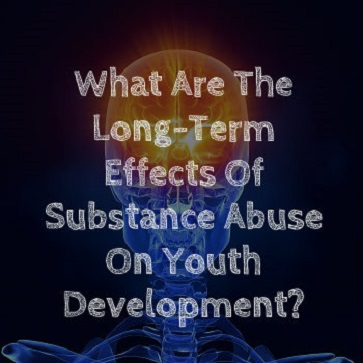 Just over one million American teenagers are addicted to illegal drugs, with another 915,000 addicted to alcohol. Even if they’re not addicted, an alarming number of teens are regularly using, with over half of high school seniors reporting having experimented with drugs and close to 30 percent having tried something other than marijuana, like heroin, cocaine, prescription drugs, inhalants, sedatives and mind-altering hallucinogens. The highest rate (19.9 percent) of illegal drug use occurs between 18 and 20 years, with the next highest rate (16.4 percent) happening between 16 and 17.
Just over one million American teenagers are addicted to illegal drugs, with another 915,000 addicted to alcohol. Even if they’re not addicted, an alarming number of teens are regularly using, with over half of high school seniors reporting having experimented with drugs and close to 30 percent having tried something other than marijuana, like heroin, cocaine, prescription drugs, inhalants, sedatives and mind-altering hallucinogens. The highest rate (19.9 percent) of illegal drug use occurs between 18 and 20 years, with the next highest rate (16.4 percent) happening between 16 and 17.
Alcohol use affects more than 10 million teens, with 5.1 million regularly binge drinking, which is defined as downing more than four or five drinks during a single sitting. Not far behind is inhalant abuse, with 25 percent of all teens 10- to 17-years-old saying they have friends who inhale dangerous fumes from things like paint, computer cleaner or glue.
Teen Drug Use Can Have Negative Effects For Years To Come
Unfortunately, the bad choices made in youth can haunt for years to come. The brain undergoes vital development during adolescence. Not since infancy has their brain been changing and forming with such rapidity.
Drug use can disturb the proper development of the prefrontal cortex in the brain. This area of the brain is responsible for important functions like organization, risk assessment, impulse control, consequence prediction and planning. But the limbic system, corpus callosum, hippocampus and cerebellum are all still forming and vulnerable to the changes wrought by drugs. Functions like emotional control, goal-setting and memory/recall are all still developing, and drug use could cause permanent problems in these areas.
Studies have repeatedly shown that heavy marijuana use damages key brain functions for years, with some researchers believing the changes are permanent. Processes like critical thinking, planning and complex attention are all shown to be diminished by heavy marijuana use. Girls seem to experience longer-lasting ill-effects, but both females and males show problems with myelin sheath formation, which affects brain signaling.
MDMA, which also goes by Molly and ecstasy, is associated with sensations of euphoria and social bonding, which is why it’s popular with young people attending large group gatherings such as concerts and dance clubs. Ironically, lowered serotonin levels as long as seven years have been observed in laboratory animals after they’ve been given MDMA, with serotonin closely associated with emotional happiness.
Alcohol causes harm to adolescent brains as well, especially binge drinking. Heavy drinking in teens has been shown to lower their ability to problem solve and understand spatial relationships, as well as memory and vocabulary impairment. And just like drugs, alcohol affects the limbic system, meaning emotional well-being is disrupted. In fact, there appears to be a connection between drinking and behavioral problems due to a lack of emotional control — researchers just aren’t sure which problem came first.
Using drugs and alcohol during adolescence can have serious and long-lasting results, with neurological development issues, impaired social development and addiction. And all of these problems can easily follow teens into adulthood.
Read More About The Effects Of Teen Substance Abuse On Families
Each year the Substance Abuse and Mental Health Services Administration (SAMHSA) conducts a National Survey on Drug Use and Health. The results of the 2012 survey have been published and coincide with the September observance of National Recovery Month.
For the most part, the report held good news showing how some worrying trends have begun to reverse. According to the 2012 study, abuse of alcohol, tobacco and even prescription drugs is on the decline.
It is helpful to compare SAMHSA studies over the past decade to get a picture of how substance use is trending among America’s youth. There was good news in terms of certain substances and no progress in either direction in terms of other substances. Here is some of what the 2012 SAMHSA report had to say:

SAMHSA Report On Prescription Drug Abuse
The news on prescription drug abuse was encouraging and showed just how effective increased awareness and minor behavioral changes can be. Just four years ago 6.4 percent of 18 to 25 year olds were abusing prescription medications each month. In 2012 that number had dropped to just 5.3 percent and figures were very similar in 2010 and 2011. Public awareness, tighter controls on medications and targeted treatments all contributed to the improved statistics in this area
Alcohol Use Trend From SAMHSA Report
The SAMHSA report also showed that rates of drinking, even heavy drinking and binge drinking, by 12 to 17 year olds were lower compared to the numbers of teens drinking in 2002 and 2009. In 2002 around 14.2 percent of teens drove while under the influence of alcohol but that figure dropped to 11.1 percent in 2011 and inched up only slightly to 11.2 percent in 2012.
SAMHSA On Tobacco Use
Tobacco use was another bright spot in the report. Just over 15 percent of teens less than 18 years old reported smoking tobacco in 2002 but that dropped precipitously to 8.6 percent in 2012.
Illegal Drug Use From SAMHSA Report
Use of illegal drugs has held pretty much steady in recent years, right at 9 percent. Marijuana has grown in popularity for nearly a decade. In 2007, 5.8 percent of teens reported using marijuana, but in 2012 that number rose to 7.3. There was a slight decline in the number of those reporting marijuana use between 2011 (7.9 percent) and 2012 (7.2 percent) but it remains the most widely used illicit drug among teens.
Rates of drug abuse and drug addiction fell from nine percent in 2002 to six percent in 2012 but there is still so much progress needing to be made. According to SAMHSA estimates, 23 million Americans needed substance abuse treatment in 2012, but only 2.5 million received specialized care. It is important to be energized by the recent successes and redouble efforts to see prevention and intervention programs become the norm.
To See More About Trends In Teen Substance Abuse – Click Here


